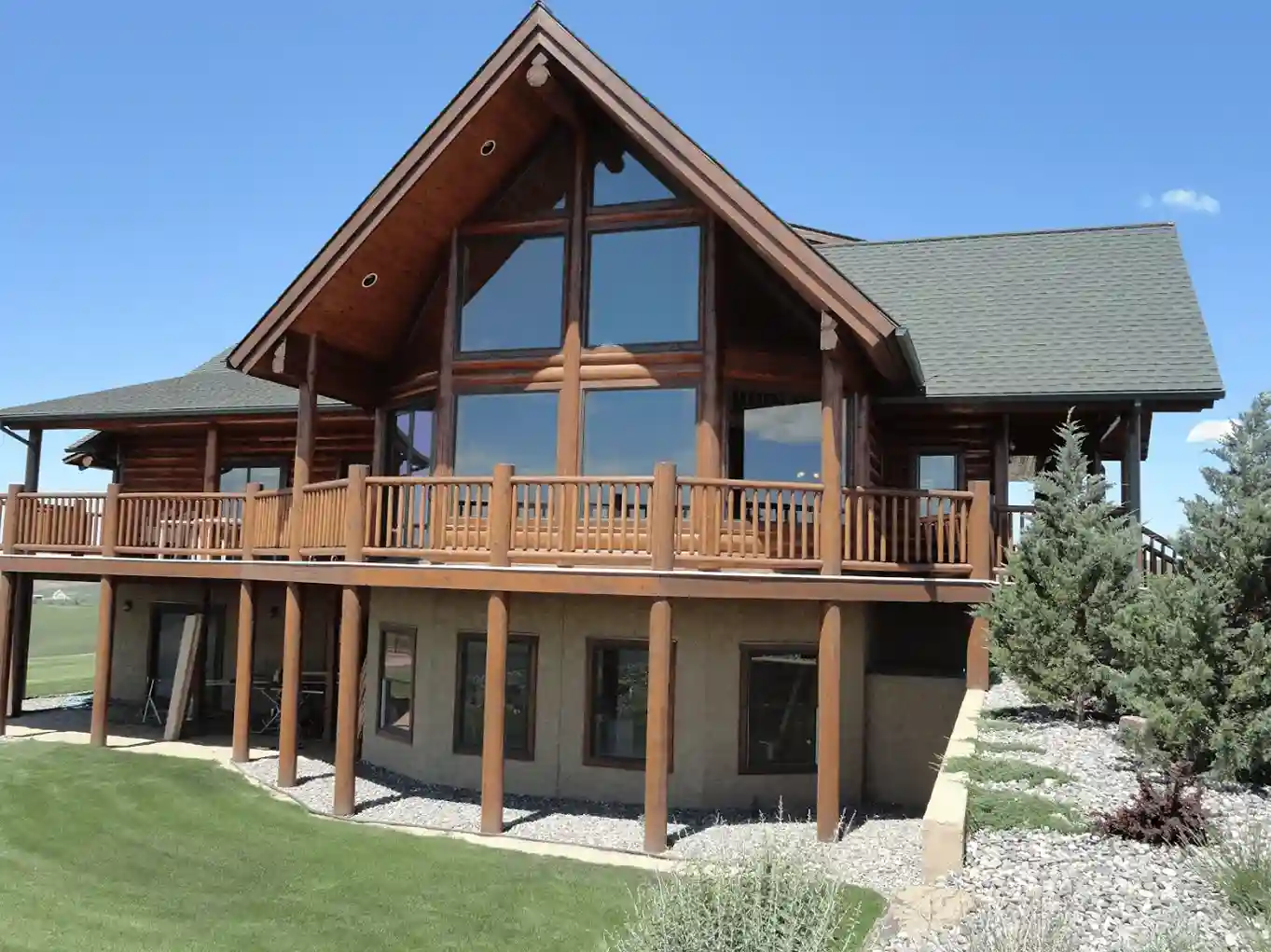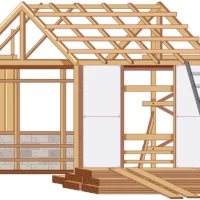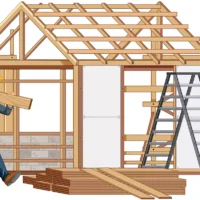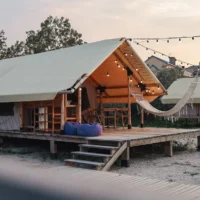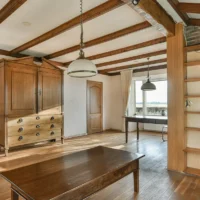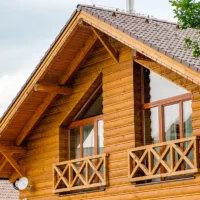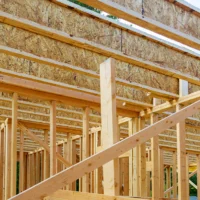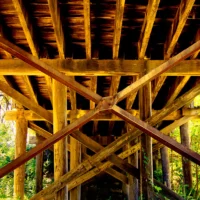Table of Contents
Introduction
The climate in Washington is similar to many other parts of the United States, but some special circumstances make it unique. For example, the state’s east side tends to be dry, while the west side is typically wet. Having a Washington log home in this environment can be challenging, but certain popular log home features can help you protect your investment. Here are five in-demand features for your Washington log home.
Cedar for Your Washington Log Home
The wood species used to build your Washington log home is critical for protecting it from environmental damage. Insect infestation, extreme weather temperatures, and storms can wreak havoc on your home which can be expensive to repair. In addition, many available wood options may not be suitable to protect your home from rot and water damage.
The superstructure of your log home is the most substantial component of your home, so it makes sense that every step should be taken to make it the most resilient. Cedar is the most common and economically feasible wood species to include in your log home design plan. As only cedar shakes are the only wood species used for wooden shingles and cedar chests are made the protect clothing from insect damage, these are obvious examples of why cedar is a preferred wood selection for your Washington log home.
Because the superstructure of a Washington log home—its walls and main frame—is the most substantial and exposed component, it must be built with a material that offers both strength and longevity. Cedar’s exceptional dimensional stability ensures it won’t easily warp, twist, or crack, maintaining its structural integrity for decades.
Cedar is also one of the most thermally efficient softwoods, which adds to the energy efficiency of your Washington log home. Its thermal mass helps regulate indoor temperatures, keeping your home cooler in the summer and warmer in the winter—especially important in a state with seasonal extremes.
The beauty of cedar is another reason it’s a preferred wood. Its natural color, grain, and texture blend seamlessly with the rugged surroundings typical of Washington log home settings, whether nestled in the forest, perched on a mountain, or located near a river or lake.
Cedar’s widespread use in products like cedar chests and cedar shakes—both known for their ability to repel insects and moisture—further proves its suitability for your Washington log home. By choosing cedar, you’re investing in a wood species that aligns with the climate, aesthetics, and performance demands unique to Washington living.
Protection for Your Washington Log Home Roof
To protect your Washington log home from rain on the west side and snow on the east side, build with ample eave lengths. Gutters, overhangs, and trenches can be highly effective in keeping water away from walls and windows. High-quality and low-maintenance roofing materials can be beneficial for protection against snow and rain, such as metal roofing, asphalt shingles, structural insulated panels, and wood shingles and shakes.
Energy Efficiency for Your Washington Log Home
Many Washington log home owners have concerns about staying warm during the harsh winter months but may underestimate the ability to stay cool during warmer months. Covered porches and extended eaves on the sunny side of your home can help with keeping the interior comfortable and lowering your monthly energy bills. The thicker the logs the greater the thermal mass and insulation qualities. Choose the largest log that will fit your budget and that is appropriately sized for the appearance of your log home design is essential.
The Right Location for Your Washington Log Home
When designing your Washington log home, look for locations that provide a shield from damage from the rain and snow. Optimal building sites have a very slight slope to facilitate drainage. When building on the west side of the state, avoid properties with wetland and poor drainage issues. . Use proper drainage techniques to avoid wet basements. Seek advice from professional log home design experts who can help guide what to look for in a site.
If you’re building on the west side of Washington, be cautious of properties near wetlands, flood zones, or areas with poor soil drainage. These locations often require costly site preparation, such as installing French drains or raised foundations, which can significantly impact your budget and timeline. Using proper drainage solutions—such as swales, gravel trenches, and strategically placed gutters—is essential for preventing water damage to your Washington log home.
For those building in Eastern Washington, consider wind exposure, snow loads, and access to sunlight. Choose a site that receives adequate sun during winter months to help naturally warm your log home and reduce energy costs. Avoid heavily shaded areas that can stay damp or icy for long periods.
Accessibility is another critical factor when choosing a site for your Washington log home. Make sure the land is reachable year-round, especially in rural or mountainous regions. Check for road conditions, snow removal access, and proximity to utility connections. The more remote the location, the more planning and infrastructure may be needed.
Budget-Friendly Floor Plan
Many homeowners have budget concerns when building a Washington log home. Pre-designed kits are an affordable option for many homeowners who desire to do a substantial portion of the construction work to reduce labor and building material expenses. One of the most crucial factors in selecting a log home design is the amount of square footage.
As a rule, if you are considering building less than 2000 SF it is more cost-effective to build a single-level home. The most cost-effective home is normally a single level with a basement. Adding accents such as cedar shakes and stone typically cost more than using logs.
Consult with your professional design consultants can help you choose the right design aspects with features that are cost-effective for your budget.
Professional Washington Log Home Design Plans
Building your Washington log home is one of the most important investments you may make in your lifetime. It can be beneficial to get recommendations and advice from experienced design consultants to make the best decisions.
Energy-efficient log homes are becoming increasingly popular, offering long-term savings and sustainability. Sierra Log & Timber has helped numerous clients across the United States plan and build Washington log homes with the highest quality materials for almost three decades. Request a design consultation for help with the best in-demand features for your dream home today.
Conclusion
Designing a Washington log home requires thoughtful planning, smart material choices, and climate-aware features. From selecting durable cedar to implementing energy-efficient designs, each element contributes to the longevity and comfort of your home. Choosing the right location, roof protection, and a budget-friendly floor plan ensures both practicality and resilience. With expert guidance from seasoned professionals like Sierra Log & Timber, you can confidently create a log home that stands up to Washington’s diverse weather while reflecting your personal style. Make informed choices today to protect your investment for decades to come.
FAQ'S
1. What is the best type of wood for a Washington log home?
Cedar is considered the best wood for a Washington log home due to its natural resistance to insects, moisture, and rot. It’s also durable and energy-efficient, making it ideal for the state’s varied climate.
2. How can I protect the roof of my Washington log home from rain and snow?
Protect your log home roof by incorporating wide eaves, quality gutter systems, and weather-resistant roofing materials such as metal roofing, asphalt shingles, or cedar shakes. Proper roof design helps prevent water infiltration and ice damage.
3. Are Washington log homes energy efficient?
Yes, Washington log homes can be highly energy efficient, especially when built with thick logs that offer strong thermal mass. Design features like covered porches and extended eaves can also help reduce heating and cooling costs.
4. What should I look for when choosing land for a Washington log home?
Look for land with slight slopes for natural drainage, and avoid areas with poor soil conditions or flood risks. Properties that receive good sunlight and are protected from harsh winds are ideal for long-term durability and comfort.
5. Can I build a budget-friendly Washington log home?
Yes, budget-friendly options like pre-designed log home kits and smaller single-level layouts can significantly reduce costs. Working with experienced design professionals can help you balance quality with affordability.
6. Is it better to build a single-level or multi-level log home in Washington?
For log homes under 2,000 square feet, single-level designs are usually more cost-effective. However, multi-level homes may offer more space on a smaller footprint. Your choice depends on your budget, lot size, and lifestyle needs.
7. Do I need a professional log home designer for my Washington log home?
Yes, working with a professional log home designer ensures that your home is suited to Washington’s climate, meets building codes, and includes the right features for efficiency, longevity, and aesthetics.
8. How do I ensure proper drainage around my Washington log home?
Use site grading, swales, trenches, and gutter systems to divert water away from the foundation. Proper drainage is key to preventing moisture issues, especially in areas with heavy rainfall.

